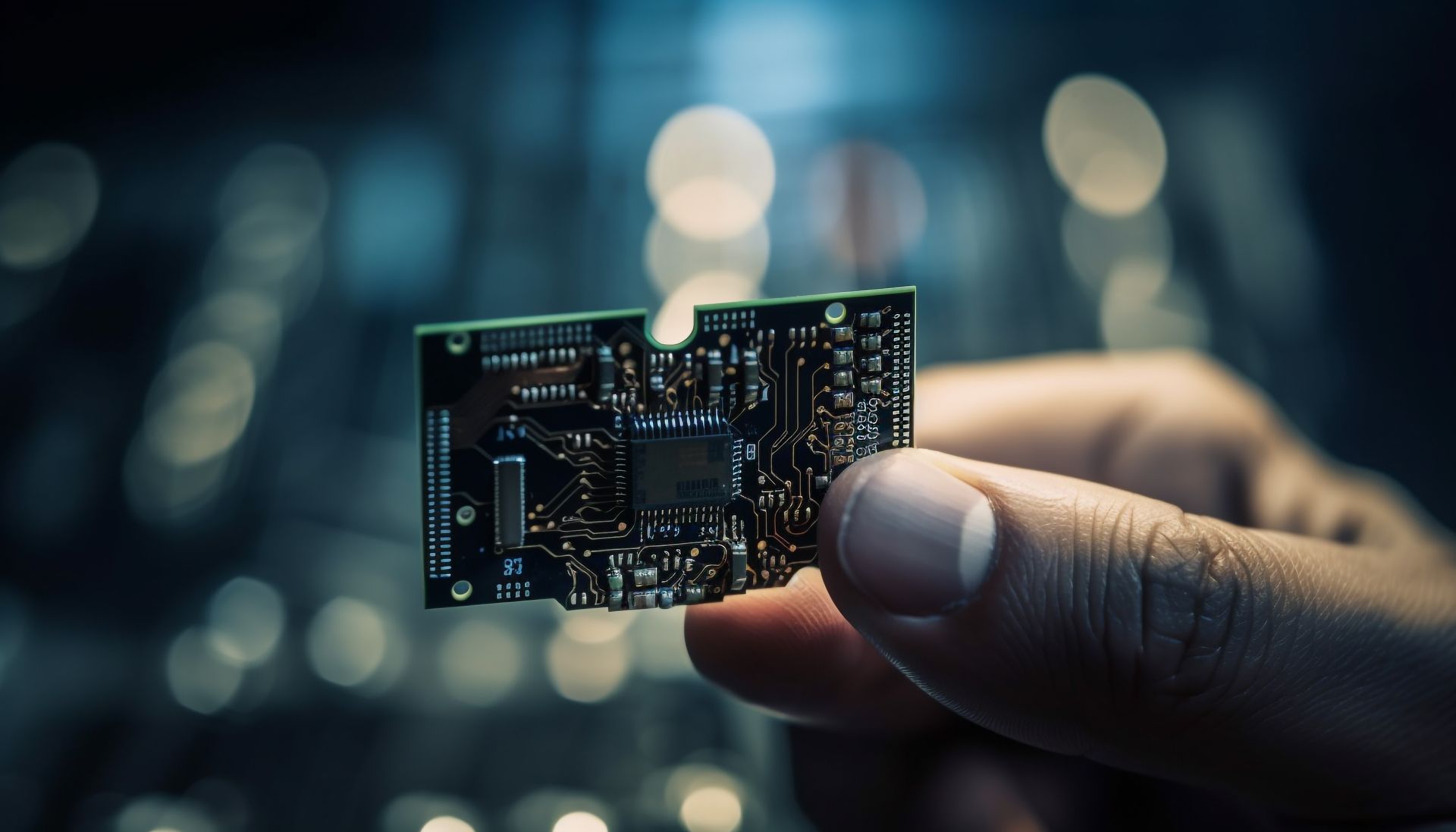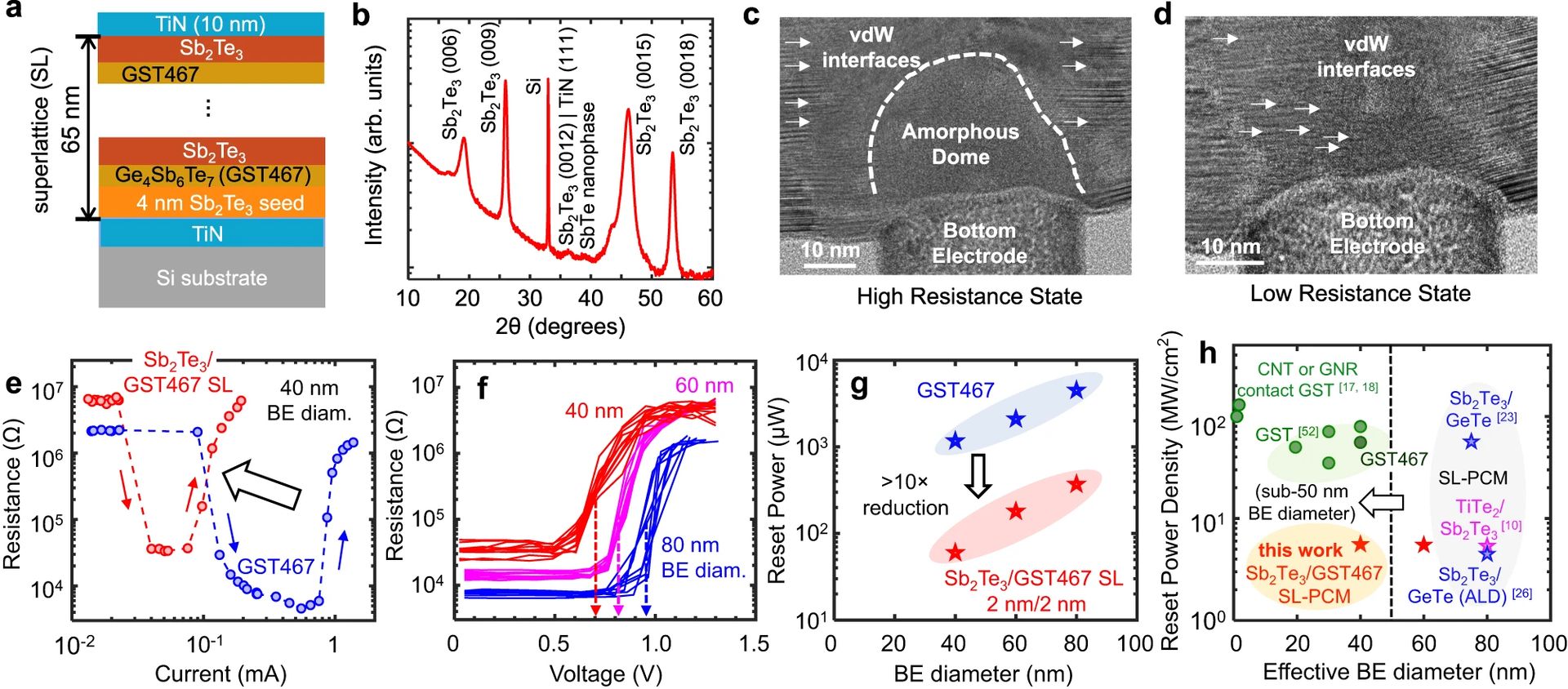The dream of a single, universal memory for computers might become a reality sooner than we think thanks to GST467.
Scientists have engineered an exciting new material named “GST467”, composed of germanium, antimony, and terbium. Used in an innovative structure called a superlattice, it could be the key to replacing both short-term RAM and long-term storage in our devices.
This breakthrough might usher in an era of computers that are faster, more energy-efficient, and less expensive.

What is universal memory?
Existing computers rely on different memory types. Short-term memory like RAM offers speed but demands large physical space and constant power. If your system shuts down, your data is lost. Flash memory (think SSDs) is great for permanent storage, but can’t match RAM’s speed for data transfer. A true universal memory would transform computing experiences with incredible performance and streamlined systems.
The scientists explain that “GST467” is an excellent candidate for phase-change memory (PCM). Its key advantage is a more stable physical transition by shifting between crystalline and melted states in a highly controlled way to represent ones and zeros of data. This transition also absorbs or releases measurable energy, further defining the storage mechanism.
The breakthrough research shows these devices are incredibly fast, power-sipping, and capable of retaining data for potentially over a decade, even at high temperatures. Importantly, the scientists believe this technology is remarkably industry-friendly for production compared to alternatives.
What does RAM do in a computer?
RAM is a super-fast storage area that holds all the information your computer is actively using right now. When you open a program, watch a video, or edit a document, the data needed for those tasks is loaded into RAM. This allows your computer’s brain, the CPU, to quickly access that information and carry out your instructions.
Unlike a hard drive or SSD, which stores your files permanently, RAM is temporary. As soon as you turn off your computer, the contents of RAM vanish. That’s why it’s so important to save your work regularly; RAM isn’t the place for long-term storage and it is the main component used in parallel processing.
The amount of RAM in your computer has a big impact on how smoothly it runs. If you have lots of RAM, you can juggle multiple programs or open huge files without your computer slowing down. On the other hand, not having enough RAM means your computer needs to constantly shuffle data between your RAM and your slower hard drive, which causes everything to feel sluggish.

How do GST467 and Phase-Change Memory work?
PCM works by utilizing a material (like GST467) that can change its physical state between crystalline and amorphous forms. These two states correspond to the binary 0 and 1 due to their radically different electrical resistances.
o change states, short electrical pulses provide targeted heating. A strong, short pulse induces rapid heating and then fast cooling, locking the material into an amorphous (molten) state. A longer, weaker pulse causes gradual heating to achieve a crystalline structure.
Since the two states have vastly different resistances, a very low-power electrical pulse can measure the resistance to read the stored data without disturbing the state.
Traditional materials used in PCM research to create universal memory involve trade-offs. Here’s where GST467 excels at:
Stability
The key to reliable PCM is how “stable” each state is. GST467 exhibits incredible stability in both its amorphous and crystalline structures, which leads to:
- Data retention: Data can be reliably stored for long periods, even at elevated temperatures. This translates into true non-volatility, a must for replacing flash storage
- Endurance: It can withstand many more read/write cycles, reducing the risk of memory cell failure
Efficient switching
GST467 can switch between states at lower temperatures and voltages than other similar materials. This directly translates to lower power consumption and faster operation.
Manufacturing friendly
The temperatures and processes needed to work with GST467 are more compatible with existing semiconductor manufacturing practices compared to some other potential universal memory materials. This potentially speeds development and reduces costs.
So, GST467 doesn’t excel in a single metric but achieves an extraordinary balance of crucial qualities. This is what puts it on a promising path toward true universal memory that bridges the gap between RAM and traditional storage.

The universal memory race
“GST467” isn’t alone in this space. ULTRARAM, based on different semiconductors, is a strong contender. While currently closer to commercialization, ULTRARAM suffers from some limitations such as higher voltage requirements and potential toxicity. In contrast, the team behind GST467 emphasizes that their design can easily integrate into existing chip-making processes. Ultimately, this factor might prove crucial for rapid adoption.
While hurdles remain, these achievements make true universal memory feel even more possible. Eric Pop, one of the research leads, highlights the future: “A key next step is to get industry partners to help us scale this up in a cost-effective way… [making] it accessible for inclusion in consumer devices”.
Featured image credit: svstudioart/Freepik.
- SEO Powered Content & PR Distribution. Get Amplified Today.
- PlatoData.Network Vertical Generative Ai. Empower Yourself. Access Here.
- PlatoAiStream. Web3 Intelligence. Knowledge Amplified. Access Here.
- PlatoESG. Carbon, CleanTech, Energy, Environment, Solar, Waste Management. Access Here.
- PlatoHealth. Biotech and Clinical Trials Intelligence. Access Here.
- Source: https://dataconomy.com/2024/02/14/what-is-universal-memory-and-gst467/



